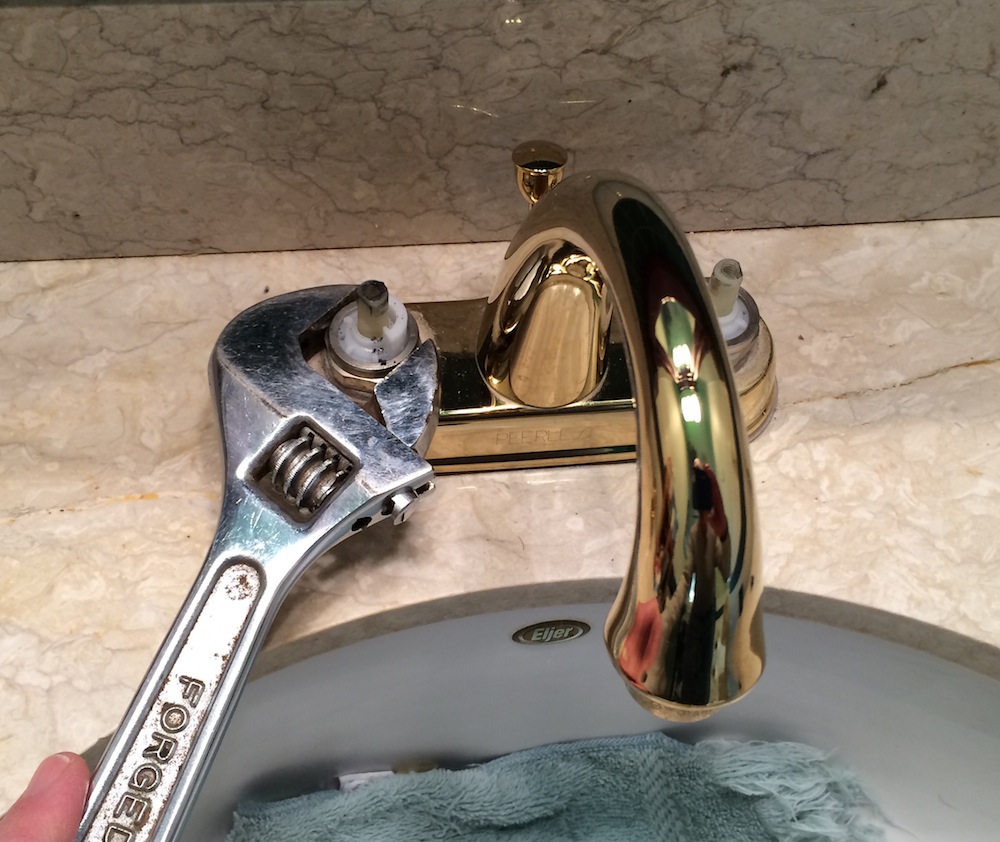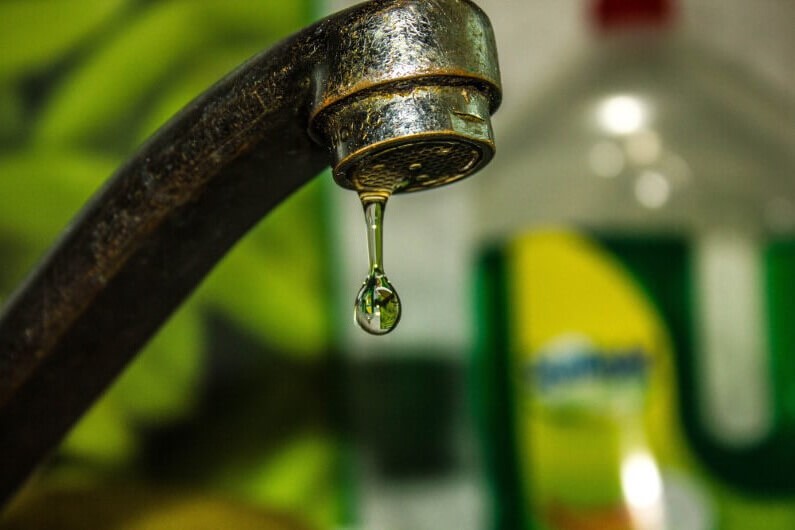This post down the page relating to Why Are My Faucets Dripping (And Can I Fix It Myself)? is extremely fascinating. You should see for yourself.

Dripping faucets may feel like a small aggravation, but their impact goes beyond just the inconvenience of the audio. From wasting water to sustaining unneeded monetary costs and health dangers, ignoring a leaking tap can lead to various repercussions. In this post, we'll look into why it's crucial to address this typical family concern immediately and successfully.
Wastefulness of Water
Ecological Influence
Leaking taps contribute dramatically to water wastefulness. According to the Environmental Protection Agency (EPA), a solitary tap trickling at one drip per second can lose greater than 3,000 gallons of water annually. This not only pressures water sources but also affects communities and wild animals based on them.
Financial Prices
Enhanced Water Costs
Past the ecological impact, leaking faucets can pump up water costs considerably. The gathered wastefulness with time equates into higher energy expenditures, which might have been prevented with timely repairs.
Potential Residential Or Commercial Property Damage
In addition, prolonged leaking can bring about harm to components and surface areas bordering the faucet. Water accumulation can trigger discoloration, deterioration, and even structural problems if left unattended, causing extra repair prices.
Health and wellness Issues
Mold and Mildew Growth
The continuous visibility of moisture from a dripping faucet creates an optimal setting for mold and mildew and mildew growth. These fungis not only compromise interior air top quality however likewise present wellness dangers, particularly for individuals with respiratory system conditions or allergies.
Waterborne Illness
Stationary water in dripping faucets can end up being a breeding place for bacteria and other microorganisms, raising the threat of waterborne conditions. Pollutants such as Legionella bacteria grow in stationary water, potentially resulting in major health problems when consumed or inhaled.
Do it yourself vs. Professional Repair
Benefits and drawbacks of Do It Yourself Repair
While some may attempt to take care of a trickling faucet themselves, DIY fixings feature their very own set of obstacles. Without proper knowledge and devices, do it yourself attempts can exacerbate the issue or bring about insufficient repair work, prolonging the issue.
Benefits of Hiring a Specialist Plumber
Working with an expert plumber ensures that the underlying cause of the dripping tap is resolved successfully. Plumbers possess the knowledge and devices to diagnose and repair tap concerns effectively, conserving time and decreasing the threat of additional damage.
Step-by-Step Guide to Repairing a Dripping Faucet
Tools Needed
Before attempting to repair a leaking tap, gather the essential devices, consisting of an adjustable wrench, screwdrivers, replacement components (such as washers or cartridges), and plumber's tape.
Common Tap Issues and Their Solutions
Determine the type of tap and the particular concern creating the drip. Typical problems consist of damaged washers, rusty valve seats, or damaged O-rings. Refer to supplier instructions or on-line tutorials for step-by-step support on repair services.
Preventive Measures
Routine Upkeep Tips
To prevent dripping faucets, execute routine maintenance such as cleaning aerators, checking for leakages, and changing worn-out components immediately. In addition, consider setting up water-saving tools or updating to more efficient components.
Importance of Prompt Services
Addressing dripping faucets as soon as they're seen stops additional water wastage and possible damages, inevitably saving both water and money in the future.
Impact on Building Value
Perception of Well-Maintained Building
Keeping a property in good condition, consisting of attending to maintenance problems like dripping faucets, improves its regarded value and charm among prospective customers or occupants.
Impact on Resale Worth
Residences with well-kept plumbing components, consisting of taps, command higher resale worths in the property market. Resolving dripping faucets can contribute to a positive impact throughout building inspections and negotiations.
Environmental Duty
Individual Payment to Preservation
Taking obligation for fixing trickling taps aligns with wider efforts toward water conservation and environmental sustainability. Every person's activities collectively make a significant influence on protecting precious resources.
Lasting Living Practices
By prioritizing punctual repair services and adopting water-saving behaviors, individuals add to sustainable living techniques that benefit both existing and future generations.
Verdict
Attending to a trickling tap goes beyond simple ease; it's a vital action towards conserving water, minimizing economic costs, and protecting health and wellness and property. Whether with DIY repairs or professional support, acting to take care of leaking taps is a little yet impactful method to promote responsible stewardship of resources and contribute to a much healthier, extra lasting future.
How to Fix a Leaky Faucet: Step-by-Step Repair Guide
A leaky faucet may seem like a simple annoyance, but if it's not fixed promptly, that leak could cost hundreds to potentially thousands. From water damage to mold, mildew, and high water bills, even a tiny leak can be catastrophic if left unattended. Damage like this can even affect the overall value of your home, so it's important to take the right approach for leaky faucet repair. You may need the help of a plumber in some cases, but we've got a few tips you can try on how to fix a leaky faucet before calling the pros.
Four Faucet Types
When you're learning how to fix a leaky faucet, the first step is knowing what kind of faucet you're working with! There are four common types.
Cartridge Faucets
Cartridge faucets come in one- or two-handled varieties. In one-handled cartridge faucets, hot and cold water combines in a single cartridge. In the two-handled versions, hot and cold water are controlled separately and mixed in the faucet.
Ball Faucets
Ball faucets have a single lever you push up and down to adjust the pressure and rotate to change the temperature. A slotted metal ball controls the amount of water allowed into the spout.
Compression Washer Faucets
They're the oldest type of faucet, but they're still used in many homes — especially older ones. Compression faucets have two separate handles that, when turned, raise or lower the washer that seals a water valve. This valve stops water from flowing through the faucet when it is turned off.
Disc Faucets
Disc faucets rarely need to be repaired due to their maintenance-free design. The water flow is controlled by two discs — the upper one raises and lowers against a fixed lower disc, creating a watertight seal. If your disc faucet starts leaking, you may need to replace the seals or clean residue buildup from the inlets.
Fixing a Leaky Faucet
Step 1: Turn Off the Water
Whether you're learning how to fix a leaky bathtub faucet or how to fix a leaky kitchen faucet, always turn off the water supply to your working area when you're fixing a leak. The last thing you want is a flood added to your list of things to fix.
Look for the shutoff valves below your sink or around the tub and turn them clockwise to stop the water flow. If your faucet doesn't have shutoff valves, you may need to turn off the water for the whole house. Check to make sure it's off by turning the faucet on. If nothing comes out, you're ready to start the repair.
Step 2: Take Apart the Faucet
How you disassemble your faucet depends on the type of fixture you have. You can use a flathead screwdriver to remove the caps on top of the handle or handles for cartridge and compression faucets. Inside, you should see handle screws. Unscrew these with a screwdriver to remove the handle.
Disc- and ball-style faucets will typically have an inlet screw near the handle, and removing that will reveal the interior of the faucet.
Detach the Valve Stem
For cartridge- and compression-style faucets, you'll see the inner valve stem or cartridge once you remove the faucet handles. If you have a compression faucet, unscrew the brass valve stem. If you have a cartridge faucet, pull out the cartridge. If your cartridge has been in place for a while, it may require some tools or extra force to remove it due to mineral deposits.
Examine and Replace Parts
Once you've removed the parts, check them out to confirm what needs to be replaced. You may see corroded rubber washers, O-rings, stems, or cartridges. On a ball-style faucet, check the seats and springs for damage.
If you need to repair a leaky disc faucet, check the inlet and seals on the lower disc.
Once you determine what parts must be replaced, visit your local hardware store. Bring the damaged parts with you to ensure you can purchase the correct components to replace them.
Clean Valves and Faucet Cavity
If you've removed a stem or cartridge, you may notice mineral buildup in the faucet's threads. Use white vinegar to clean the valve seat by soaking it for a few minutes, then scrub it away with a soft toothbrush and rinse with warm water. You can also clean the interior of the faucet in the same way.
Reassemble the Faucet
Once your faucet is cleaned and the required parts have been replaced, it's time to reassemble it. Put the pieces back together and slowly turn the water supply back on. Doing this slowly is crucial because too much initial water pressure can damage the new hardware you've just installed.
https://homewarranty.firstam.com/blog/how-to-fix-leaky-faucet

I was introduced to that editorial on Should I Repair or Replace a Leaky Faucet? from an associate on a different blog. Sharing is nice. You never know, you will be helping someone out. Thank-you for going through it.